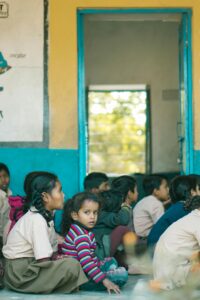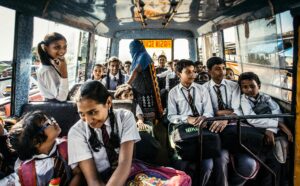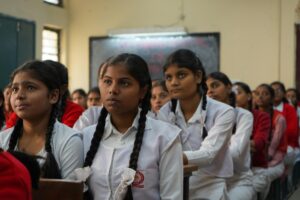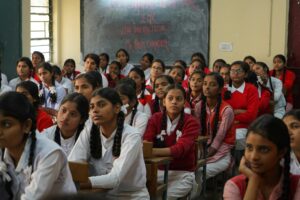The school system in India is different and complex, taking special care of a huge populace with shifting requirements and foundations. Here is an outline:
Structure: The school system in India is organized into a few phases:
Pre-essential training: As a rule begins at 3 years old or 4 with kindergarten or pre-school instruction.
Essential training: From grades 1 to 5, zeroing in on fundamental proficiency, numeracy, and primary information.
Optional instruction: From grades 6 to 10, where the educational plan turns out to be more exhaustive, including subjects like arithmetic, science, social examinations, and dialects.


Higher auxiliary training: Grades 11 and 12, where understudies pick specific streams like science, trade, or humanities.


Advanced education: Incorporates undergrad and postgraduate projects presented by colleges and universities.
Mechanism of Guidance: The vehicle of guidance fluctuates the nation over. While English is broadly utilized in metropolitan regions and in numerous tuition based schools, local dialects are in many cases utilized in government schools and in provincial regions.
Board Frameworks: There are few training sheets overseeing schools in India, including:
Focal Leading body of Optional Training (CBSE): A public leading group of instruction for public and non-public schools, following a concentrated educational plan.
Indian Endorsement of Optional Training (ICSE): Another public board, offering a more extensive educational program contrasted with CBSE.
State Sheets: Each state has its own leading group of schooling, with its own educational program and assessment framework.
Challenges:
Access and Value: Differences exist in admittance to quality schooling, with rustic regions frequently missing satisfactory foundation and assets.
Quality: In spite of critical advancement, the nature of training stays a worry, with issues like educator opening, obsolete educational plans, and repetition learning common in many schools.
Reasonableness: While government funded schooling is hypothetically free, there are much of the time stowed away expenses like garbs, books, and transportation, which can be hindrances for financially distraught families.
Expertise Advancement: There’s a rising accentuation on ability based instruction to satisfy the needs of the cutting edge labor force, yet the ongoing framework frequently focuses on hypothetical information over functional abilities.
Changes and Drives: Endeavors have been made by the public authority and different associations to address these difficulties and further develop the schooling system. Drives include:
Sarva Shiksha Abhiyan (SSA): A program pointed toward universalizing rudimentary training and working on its quality.
Rashtriya Madhyamik Shiksha Abhiyan (RMSA): Spotlights on further developing optional schooling foundation and quality.
Public Training Strategy (NEP) 2020: An extensive approach meaning to redesign the schooling system, with accentuation on all encompassing turn of events, adaptability, and combination of innovation.
By and large, the schooling system in India is going through critical changes to address the issues of a quickly developing society and economy, yet challenges stay in guaranteeing fair access and quality Training for all

